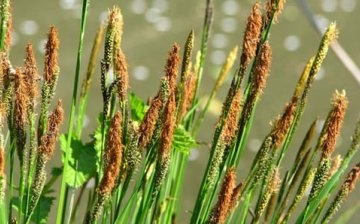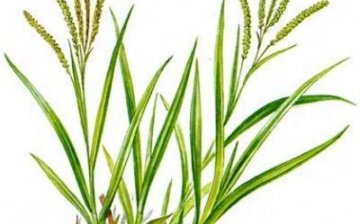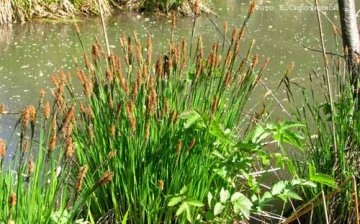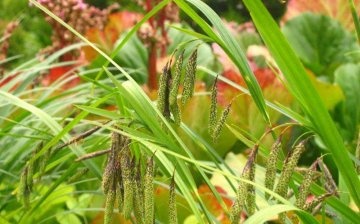Features of cultivation and care of acute sedge
Acute sedge belongs to the category of perennial grasses. This plant is characterized by ease of care, which attracts the attention of many flora lovers.
Content:
- Description of acute sedge
- Peculiarities of caring for acute sedge
- Features of reproduction and use of the plant
Description of acute sedge
In appearance, acute sedge resembles plant of the family of cereals... The stems of this plant have a triangular cross-section and are filled with a pith. The foliage of this plant is attached to the bottom of the stem. It is characterized by the presence of silicified spines. If you run your fingers over the sedge leaves, you can cut deeply enough.
Sharp sedge has a well-developed root system. When it grows, it forms mounds, which in their appearance resemble a hemisphere.
The length of the rhizomes can be from 1 to 25 centimeters. The shoots of this plant are dihaotropic. Acute sedge is characterized by the presence of female and male inflorescences in the form of spikelets. One sedge bush can contain from 2 to 3 male and from 3 to 5 female spikelets.
Spikelets of this plant are characterized by the presence of cover leaves that do not have a sheath. Covering leaves have rather long leaf plates. Sometimes this leaf can be equal to the inflorescence, and sometimes it exceeds its growth. The upper female spikelets may have male flowers. The anthers are about three millimeters long. The foliage of this plant has a bright green color... On rare occasions, foliage may have a gray tint. This plant blooms quite rarely, but grows quickly.
Peculiarities of caring for acute sedge
Acute sedge belongs to the category of meadow or marsh plants. This suggests that she is not afraid of direct sunlight. Planting this plant is best done in a sunny place. This plant loves moisture very much, therefore it is necessary for it to provide abundant and regular watering.
Sharp sedge is a rather thermophilic plant, so it must be planted and grown in temperature ranges from 18 to 30 degrees.
Flower beds are decorated with this plant., front gardens, etc. At the same time, its disembarkation should not be done in places where people walk or rest, otherwise they may cut themselves. Sharp sedge grows very quickly, therefore, to slow down its growth, it is necessary to mow it periodically. In the autumn period, acute sedge must be mowed to the root, otherwise its harvesting can bring a lot of trouble.
If last year's leaves remained on the bush in the spring, then they must be removed. You can use regular scissors for this. Also, dry sedge leaves are easily removed with an iron panicle. If the area with sedge is very large, then you can clean it in this way: after the sedge foliage dries, it must be set on fire. The dried foliage will burn, and new green pagons will appear in its place. This action must be performed before the first pagons are pierced.
Care for acute sedge consists in carrying out the following actions:
- Watering
- Mowing
- Spring harvesting dry leaves
Even an inexperienced gardener can perform this action. That is why sedge is sharp widely used for design decorationas well as for the provision of pastures.
Features of reproduction and use of the plant
Acute sedge is characterized by the presence of a protogonium. In the presence of wind in the afternoon, pollen from this plant spills out. Acute sedge blooms from the middle sections of the spikelets.
This plant propagates mainly by seeds with the help of the wind, which carries them.
You can also propagate this plant. division of the root system... This breeding method is often used when it is necessary to create artificial meadows or pastures, as well as to decorate landscape design.
Seed propagation tricks:
- Sedge seeds have a similarity of 5 percent. Thanks to this, there is no excessive overgrowing of meadows.
- After the seeds germinate, they develop the vaginal portions of the cotyledon.
- After a few days, this plant already has lateral roots, and a little later it has the tip of the first green leaf.
- The roots of the seedling are covered with a lot of hairs, which allows this plant to be very well accepted.
Mature plants have arcuate or horizontal rhizomes that are unable to branch out during the first growing season. In subsequent seasons, this plant forms tillering zones of different ages.
Sedge is widely used for pastures. In many countries, it is specially planted, since it has a sufficiently developed and succulent herbaceous structure. It is widely used for pasture of cows, horses, buffaloes, as it significantly increases the amount of milk. In addition, this plant is used as food, as it can significantly increase their fat layer.
More information about marsh plants can be found in the video.













